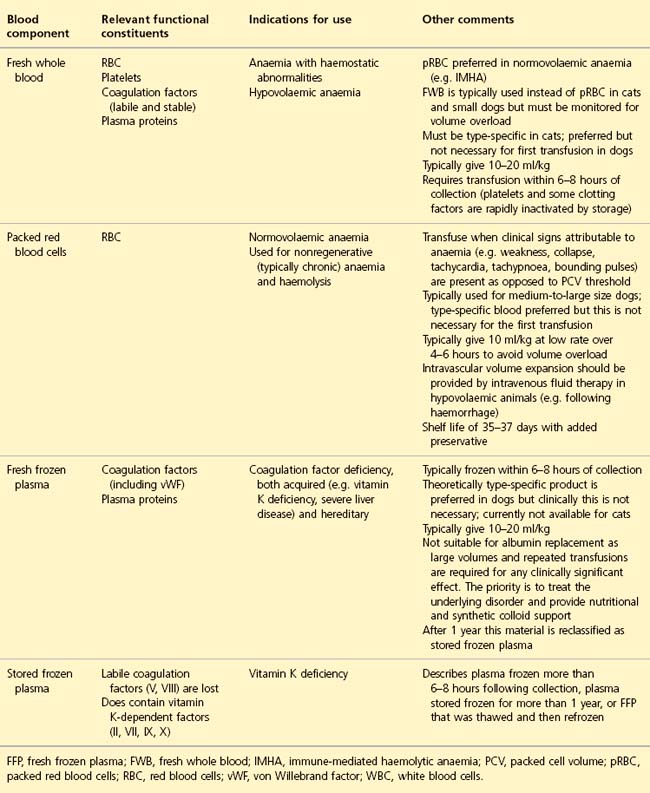40 Notes on transfusion medicine
Blood Components
Use only the blood product indicated to minimize risk of a transfusion reaction and reduce the total volume to be administered (Table 40.1).
Anaemia – normovolaemic versus hypovolaemic
Normovolaemic anaemia
• These patients require oxygen-carrying capacity and therefore ideally packed red blood cells (pRBC) only.
• Separation of feline whole blood into components is not commonplace, so cats typically receive fresh whole blood (FWB) transfusion.
• It is often less wasteful to use FWB for small dogs (although smaller or half-units of pRBC may be satisfactory).
Blood Types
These are determined by species-specific inherited antigens on the red blood cell surface.
Canine blood types
• Dog erythrocyte antigen (DEA) 1.1, 1.2, 3, 4, 5, 6, 7 and 8 (plus others); positive or negative for each DEA type.
Clinical Tip
• If blood typing cannot be performed, DEA 1.1-negative blood should ideally be given if available. However, dogs are not believed to have clinically significant, naturally occurring antibodies against foreign red blood cell surface antigens (alloantibodies) and therefore the first blood transfusion between two dogs of opposite blood types is unlikely to cause an acute transfusion reaction. Therefore DEA 1.1-positive blood can be used for the first transfusion if necessary. However, it will induce alloantibody production that may then shorten the lifespan of the transfused red blood cells.
Feline blood types
Routine testing is carried out for blood types A, B and AB.
Type B
• More common among exotic and pure breeds – e.g. British short hair, Devon Rex, Cornish Rex, Abyssinian, Persian, Himalayan, Somali and Maine Coon.
• Most type B cats have high levels of strong, naturally occurring anti-type A alloantibodies (from 2 months of age).
Type A
• A small percentage of type A cats have weak, naturally occurring anti-type B alloantibodies (from 2 months of age).




